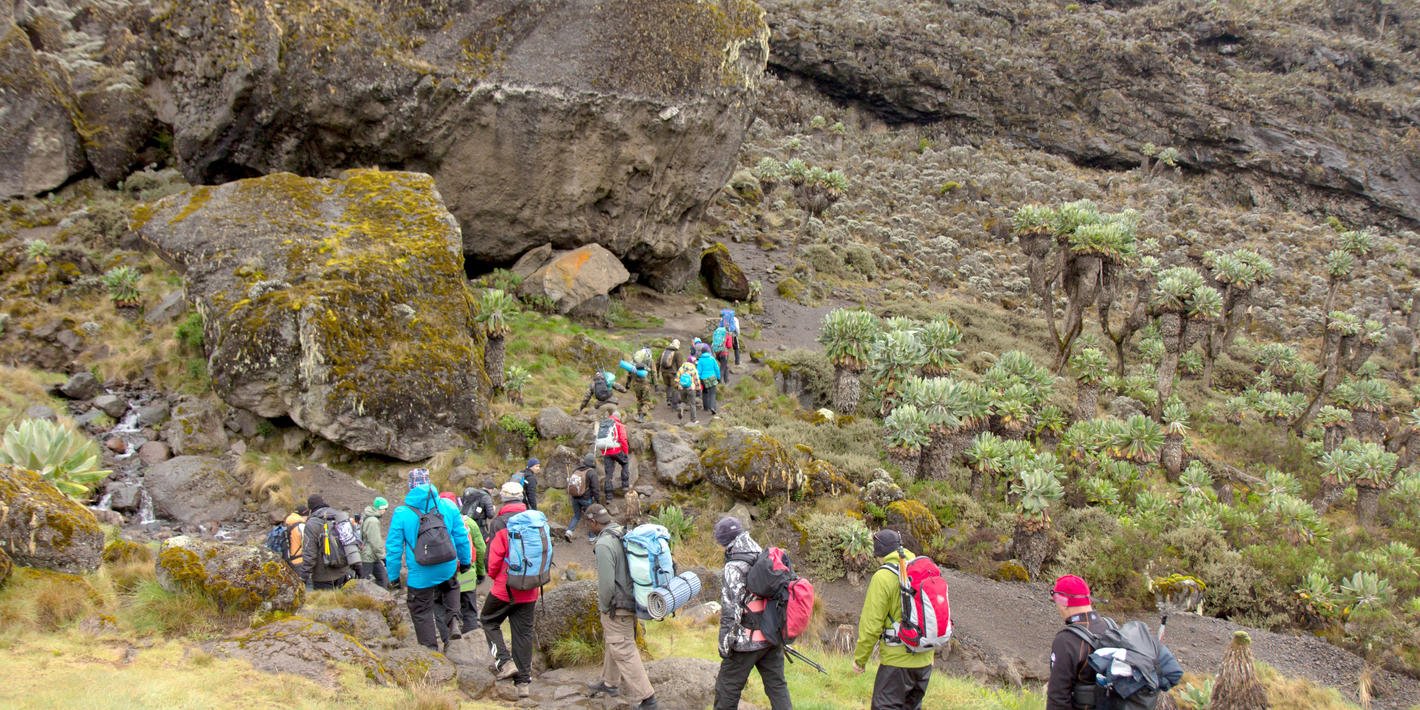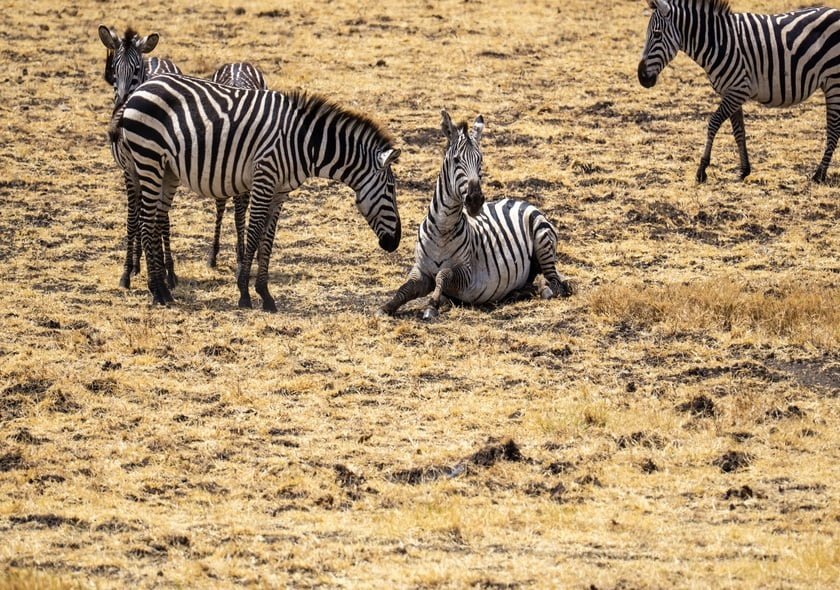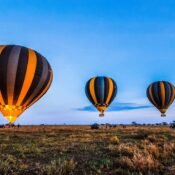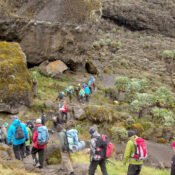
How Long Does It Take to Climb Mount Kilimanjaro?
How Long Does It Take to Climb Mount Kilimanjaro?
Introduction
How long does it take to climb Mount Kilimanjaro? It takes 6 to 9 days to climb Mount Kilimanjaro, depending on the route and acclimatization schedule. Shorter routes like Marangu may take 5–6 days, while longer options such as Lemosho or the Northern Circuit last 8–9 days and offer higher success rates.
Dreaming of an unforgettable adventure in Tanzania? Climbing Mount Kilimanjaro, the tallest mountain in Africa and one of the world’s seven summits, promises a thrilling and awe-inspiring experience. Reaching its summit, Uhuru Peak, at 5,895 meters (19,341 feet), is a monumental achievement that demands preparation, stamina, and determination.
Many travellers wonder, “How long does it take to climb Kilimanjaro?” For a person with average fitness, the ascent usually takes five to nine days, depending on the chosen route, acclimatization schedule, and hiking pace.
Slow and steady trekking is essential to ensure a safe and enjoyable experience. Shorter tours exist, but they are often not recommended for beginners. The mountain offers programs for all levels, from casual hikers to experienced adventurers. Highlighting the importance of preparation, climbers must train in advance, equip proper gear, and understand altitude impacts to maximize the chances of summiting safely.
Climbing Kilimanjaro is more than just reaching the top; it is about experiencing the diverse landscapes along the way. Hikers move through lush rainforest, open moorlands, alpine deserts, and glacial slopes, each presenting unique challenges.
Proper acclimatization is vital, and choosing the right route plays a major role in summit success. Longer routes like Lemosho or Northern Circuit allow the body to adjust gradually, increasing success rates while offering breathtaking panoramic views.
Weather conditions, group dynamics, and personal fitness levels influence the pace and duration of the climb. With professional guidance, climbers can plan a customized itinerary to match their fitness, preferred pace, and desired experiences. Highlighting these factors ensures adventurers approach the climb safely, enjoy the scenery, and create unforgettable memories on Africa’s highest peak.
Understanding the Time Commitment for Kilimanjaro
Climbing Mount Kilimanjaro requires careful consideration of the time commitment and influencing factors. Route selection significantly affects the duration, as shorter paths like Marangu and Rongai may take five to six days, while scenic routes such as Machame or Lemosho often require six to eight days for gradual ascent and proper acclimatization.
Altitude gains each day is critical; rapid ascent increases the risk of altitude sickness, while slow climbing allows the body to adjust naturally. Fitness level affects pace, but even experienced hikers must respect the mountain’s challenges. Highlighting acclimatization, spending at least five nights below 13,000 feet is recommended to reduce altitude-related issues. Weather conditions, group dynamics, and emergency contingencies also impact schedules, making flexible planning essential for a successful climb.
Daily demands are physically and mentally intense, requiring endurance, stamina, and determination. Each stage presents unique challenges, from rainforest trails to glacial landscapes, requiring climbers to pace themselves carefully.
Experienced guides can make a significant difference, monitoring health, advising on proper acclimatization, and ensuring safety throughout the journey. Post-summit recovery time is crucial, as fatigue and altitude effects can persist before descending safely.
Longer itineraries enhance safety and allow climbers to fully enjoy Kilimanjaro’s diverse ecosystems. Highlighting this, climbers are advised to prioritize longer routes for better acclimatization, higher success rates, and a more immersive adventure. The climb is as much about preparation and planning as it is about reaching the summit, making careful timing essential.
So You’ve Decided to Climb Kilimanjaro
Taking on the challenge of climbing Africa’s highest mountain requires preparation and commitment. Proper training, including aerobic exercises and hill-walking, is crucial to prepare the body for the physical demands.
Fitness, stamina, and endurance all play a role in successfully summiting Kilimanjaro. Even without professional climbing skills, participants must gradually condition their bodies to handle long days of hiking at varying altitudes.
Highlighting preparation, months of training may be needed for beginners to reach a level where the climb is enjoyable and safe. Equipping appropriate gear, including layered clothing, boots, trekking poles, and sleeping equipment, is essential to handle varying temperatures and weather conditions along the trail.
Climbers must also mentally prepare for the trek. Challenges such as altitude, fatigue, unpredictable weather, and steep sections require determination, focus, and perseverance. Success depends not only on physical strength but also on a positive mindset and a steady pace during the ascent. Routes like Machame, Lemosho, and Northern Circuit are recommended for better acclimatization, gradually increasing the body’s tolerance to high altitudes.
Highlighting route selection, longer itineraries increase summit success while providing opportunities to enjoy breathtaking landscapes, from alpine deserts to glacial peaks. With proper preparation, determination, and guidance, climbers can safely achieve the unforgettable milestone of reaching Uhuru Peak.
Climb Kilimanjaro Seasons
Choosing the best time to climb Kilimanjaro is critical for safety, enjoyment, and success. The mountain’s weather is influenced by seasonal rains and temperature fluctuations. Highlighting ideal climbing periods, the dry seasons from January to March and June to October provide the most favorable conditions, offering clear skies, sunshine, and better trail accessibility. Climbing during these months reduces the risks of slippery paths and extreme weather, making the trek more comfortable and safer.
The mountain experiences occasional rain even during dry seasons, but these periods are generally more predictable and manageable. Planning your climb within these months ensures not only safety but also the opportunity to witness stunning sunrises and panoramic views over the Tanzanian plains.
During the wet seasons, trails become muddy, rivers swell, and visibility may be reduced, making the climb more challenging. Trekkers should be prepared for changing weather conditions regardless of season. Acclimatization remains essential in all periods, as temperature variations are significant at higher altitudes.
Highlighting preparation for climate, layering clothing, staying hydrated, and pacing the ascent can mitigate environmental stress. The chosen season also impacts wildlife sightings and scenic photography, as clear skies enhance visibility of the surrounding landscapes. Selecting the right climbing season allows hikers to combine safety, comfort, and the most rewarding visual experience while ascending Kilimanjaro.
Routes Up Mount Kilimanjaro
Mount Kilimanjaro has seven main trekking routes, each offering a distinct experience, scenery, and level of difficulty. The Marangu route, also called the “Coca-Cola route,” is the most beginner-friendly and provides dormitory-style huts instead of camping. Hikers often favour this route due to its established facilities and less strenuous terrain.
However, experienced climbers seeking adventure and panoramic views may prefer longer routes like Lemosho, Machame, or Northern Circuit, which offer more gradual ascents, higher success rates, and stunning scenery. The Rongai route, starting from the north near the Kenyan border, provides remote and less crowded paths for those seeking solitude and wilderness experiences.
Other routes, such as Shira and Umbwe, vary in difficulty and terrain. The Shira route is scenic but starts at a high altitude, requiring quick acclimatization, whereas Umbwe is the steepest and most challenging, with a direct ascent that limits gradual acclimatization.
Highlighting route selection, the Northern Circuit is considered the most balanced, offering nine days of trekking and high success rates due to extended acclimatization opportunities. Choosing a route depends on fitness, experience, schedule, and preferred scenery. Longer, gradual routes provide safer acclimatization and greater chances of reaching Uhuru Peak, making them ideal for first-time climbers seeking a rewarding and memorable Kilimanjaro experience.
What is Acclimatization?
Acclimatization is the process by which the body adapts to lower oxygen levels at high altitude. On Kilimanjaro, proper acclimatization is crucial to prevent altitude sickness and increase the likelihood of summit success. Climbers gradually ascend and rest at intermediate elevations, allowing their bodies to adjust to thinning air. The ideal strategy involves spending at least five nights below 13,000 feet before proceeding higher.
Highlighting this, longer itineraries naturally include these rest periods, improving safety and performance. Physical symptoms of poor acclimatization include headaches, fatigue, nausea, and shortness of breath, making proper pacing and planning essential for health and enjoyment during the climb.
Acclimatization is not only about rest but also about monitoring daily progress, hydration, and nutrition. Guides play a vital role in ensuring climbers do not ascend too quickly and that they recognize warning signs of altitude-related complications. Highlighting the benefits, gradual acclimatization increases endurance, improves comfort, and allows climbers to experience Kilimanjaro’s diverse landscapes without compromising safety.
The combination of careful pacing, proper preparation, and rest ensures that trekkers can reach Uhuru Peak while minimizing risks, making acclimatization one of the most important aspects of a successful Kilimanjaro climb.
Ascent and Descent
Climbing Mount Kilimanjaro usually takes between five to nine days, depending on the chosen route and pace. The descent is faster, often taking two days from the summit to the final camp, though some routes allow for quicker completion. Hikers experience dramatic changes in terrain, from rainforest to alpine desert, to glacial landscapes at higher altitudes.
Highlighting the ascent, slow pacing during the summit push is crucial for both physical performance and safe acclimatization. Descending requires attention as fatigued muscles and altered balance can make the final stage challenging. Professional guides assist in managing pace, safety, and overall timing throughout the climb.
The summit day, usually starting late at night, is the most demanding segment, involving steep climbs in cold temperatures. Climbers must maintain energy, focus, and rhythm to reach Uhuru Peak at sunrise, creating a truly unforgettable experience. Highlighting the importance of recovery, proper nutrition, hydration, and rest during both ascent and descent are critical.
The final descent, while physically easier than the climb up, can be demanding on joints and muscles, emphasizing the need for careful pacing and technique. Completing the round trip successfully requires endurance, mental resilience, and strategic planning to safely return to base camp.
FAQs
Climbing Kilimanjaro raises several common questions. How long it takes depends on route selection, with shorter paths like Marangu taking 5-6 days, and longer routes like Lemosho or Machame taking 7-9 days. Even highly fit climbers should avoid rushing, as altitude acclimatization is crucial to prevent sickness.
The best climbing seasons are January to March and June to October, offering dry trails, clear skies, and favourable conditions for summit success. Professional climbing skills are not required, but pre-climb aerobic preparation and hill-walking are essential for endurance. Highlighting altitude effects, gradual ascent schedules help climbers adapt to lower oxygen levels, reducing fatigue and health risks.
Factors such as weather, group dynamics, and unexpected challenges influence the overall time commitment. Longer itineraries are safer and more enjoyable, allowing full appreciation of the mountain’s scenic diversity. Choosing experienced guides improves acclimatization management, route navigation, and safety.
Highlighting route selection, climbers benefit from panoramic views, better success rates, and fewer crowds on longer paths. The combination of careful planning, physical preparation, and guided expertise ensures that adventurers reach Uhuru Peak safely and create lasting memories. Regardless of the chosen route, Kilimanjaro remains a life-changing adventure for those ready to embrace its challenges.
Conclusion
Climbing Mount Kilimanjaro is a once-in-a-lifetime adventure, blending physical endurance, mental resilience, and breathtaking natural beauty. The duration of the climb depends on the route, acclimatization, fitness level, and weather, typically ranging from five to nine days. Highlighting preparation and pacing, longer itineraries are recommended for safer trekking and better summit success.
Professional guidance, proper gear, and pre-climb fitness training significantly enhance the experience. Each route offers unique landscapes, from lush rainforests to glacial peaks, providing a comprehensive view of Africa’s tallest mountain.
Success on Kilimanjaro requires patience, preparation, and respect for the mountain’s challenges. Acclimatization, route choice, and timing are essential for minimizing risks and maximizing the adventure.
Climbers who take the time to prepare fully and pace themselves are rewarded with a triumphant summit at Uhuru Peak, unforgettable sunrise views, and memories that last a lifetime. Highlighting the transformative nature of this journey, the climb is not only about reaching the top but also embracing the diverse landscapes, personal challenges, and exhilaration that Kilimanjaro uniquely offers.
All Categories
Recent Posts
The Best Time to Go on a Safari in Tanzania
Tanzania Travel Safety Update 2025
How Long Does It Take to Climb Mount Kilimanjaro?





